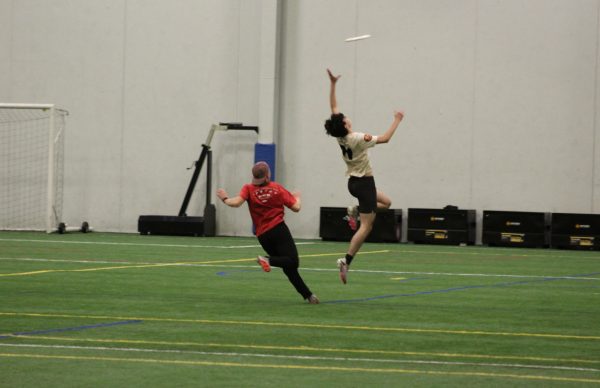Sedentary behavior adversely impacts students
Effects include concentration, low oxygen levels in blood
Sedentary lifestyles are a common phenomenon in our society, yet such a trend can be reversed, according to Kara Whitaker of the University of Minnesota School of Public Health.
According to Whitaker, who was interviewed via email, over the last 50 years, physical activity was effectively engineered out of our lives.
“We are able to drive to school/work, take elevators, use machines to wash our clothes and dishes, all of which require very little physical activity,” Whitaker said. “If you want to have a healthy lifestyle, you have to work harder than in the past to be physically active.”
According to World Health Organization (WHO), 60 to 85 percent of people in the world lead sedentary lifestyles, making it one of the more serious, yet insufficiently addressed public health issues of our time.
Sophomore soccer and hockey player Nels Hoikka said the benefits of being active include an increase in energy.
“Right now I play soccer and I play hockey and I’m thinking about starting track,” Hoikka said. “I feel like when I’m working out or exercising, I feel better. In the mornings, it is easier to wake up. I just feel like I have more energy.”
Whitaker said students should create a balance between schoolwork and recess.
“It’s difficult as a student to avoid sitting for long periods of time while doing homework or studying. However, it’s important that you regularly take breaks while studying to get up and move around,” Whitaker said.
According to WHO, sedentary lifestyles increase all causes of mortality, double the risk of cardiovascular diseases, diabetes, and obesity, and increase the risks of colon cancer, high blood pressure, osteoporosis, lipid disorders, depression and anxiety.
Hoikka said the advantages of exercising extend beyond health improvements.

Sophomore Joe Vainikka sits at a computer during first hour Jan. 5. One factor that increases the chances of a sedentary lifestyle is the amount students sit during school. According to World Health Organization, 60 to 85 percent of people lead sedentary lifestyles.
“(Being involved in a sport) helps with your time management because you’ve got to learn to balance time,” Hoikka said. “It helps you relieve anger. (Additionally), you get to meet people. On our hockey team, we are all really close and we’ll do a lot of team bonding.”
Whitaker said sitting for long periods of time slows down brain activity, making it more difficult to concentrate in school.
“Sitting for long periods of time also reduces the amount of oxygen you take in, which in turn decreases the amount of oxygen circulating in your blood and you have less oxygen coming to your brain,” Whitaker said.
Whitaker said all students should meet physical activity guidelines to prevent the effects of sedentary lifestyles.
“For your age, you should try to get at least 60 minutes of moderate to vigorous intensity physical activity per day,” Whitaker said. “Examples are taking brisk walks, playing basketball or soccer with friends, going for a run, regularly taking part in gym class, etc. You want to work hard enough to increase your heart rate and break a sweat.”
Hoikka said he advises students who feel they live sedentary lifestyles to unleash a competitive attitude.
“Just to go out there and try (being active). It is really fun,” Hoikka said. “Just find something you are really good at because if you find something you’re good at and you like to be competitive, it is really fun. Just go out there and try your hardest.”

Hey guys! My name is Dani and I’m the Editor-in-Chief this year! When I am not devoting my time to Echo, you can find me in the kitchen training to become...










